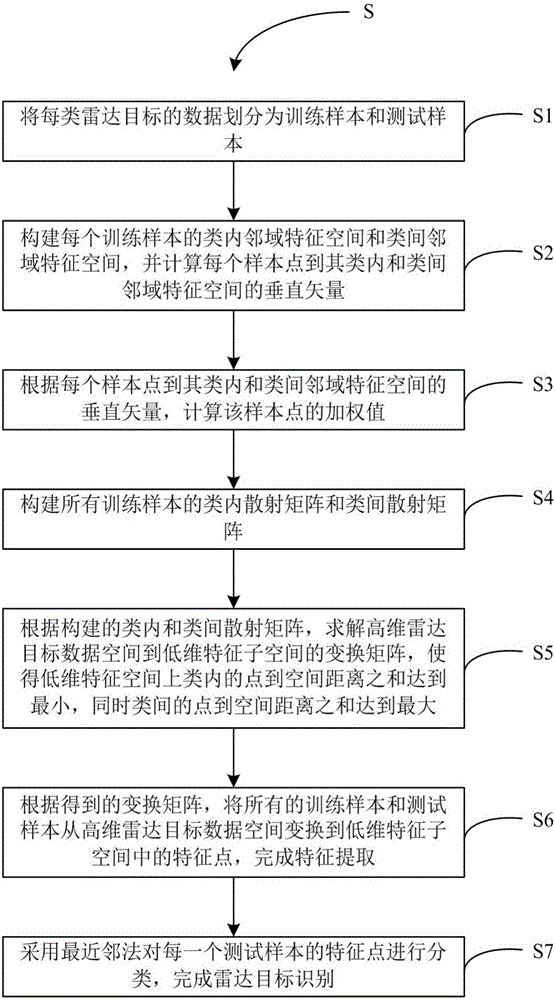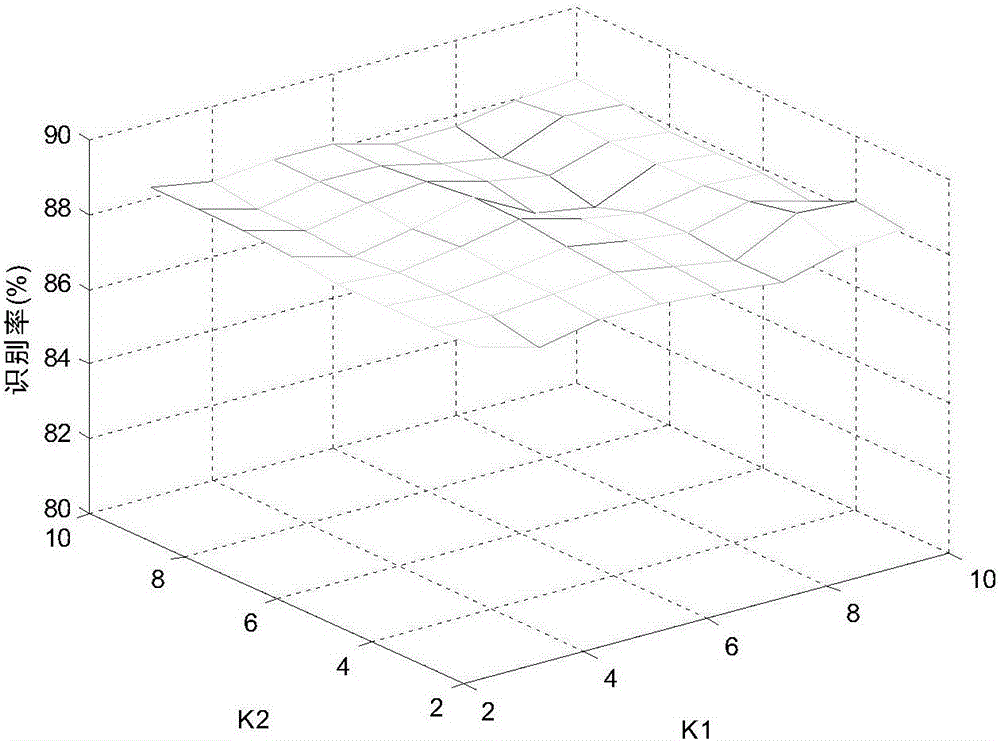Neighborhood characteristic space discriminant analysis based radar target identification method
A technology of neighborhood features and radar targets, applied in character and pattern recognition, instruments, computer parts, etc., can solve the problems of the degradation of radar target recognition performance, the subspace can not truly reflect the geometric structure relationship, interpolation errors, etc. Radar target recognition performance, low computational complexity, and the effect of improving learning ability
- Summary
- Abstract
- Description
- Claims
- Application Information
AI Technical Summary
Problems solved by technology
Method used
Image
Examples
Embodiment Construction
[0023] The implementation of the present invention will be described in detail below with examples, so as to fully understand and implement the implementation process of how the present invention uses technical means to solve technical problems and achieve technical effects.
[0024] The present invention is based on the radar target recognition method of neighborhood feature space discriminant analysis, such as figure 1 As shown, the specific steps are as follows:
[0025] Step S1: Divide the data of each type of radar target into training samples and test samples.
[0026] The training sample is used for subspace learning to obtain a transformation matrix from a high-dimensional data space to a low-dimensional feature subspace, and the test sample is used for target classification to test the recognition performance of the provided method .
[0027] In implementation, it is generally required that there is no overlap between training samples and test samples. In one embod...
PUM
 Login to View More
Login to View More Abstract
Description
Claims
Application Information
 Login to View More
Login to View More - R&D Engineer
- R&D Manager
- IP Professional
- Industry Leading Data Capabilities
- Powerful AI technology
- Patent DNA Extraction
Browse by: Latest US Patents, China's latest patents, Technical Efficacy Thesaurus, Application Domain, Technology Topic, Popular Technical Reports.
© 2024 PatSnap. All rights reserved.Legal|Privacy policy|Modern Slavery Act Transparency Statement|Sitemap|About US| Contact US: help@patsnap.com










